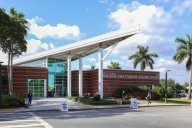You have /5 articles left.
Sign up for a free account or log in.

Quite a few institutions delayed big fundraising initiatives during the pandemic and instead unveiled them this fall.
PKpix/Getty Images
Fundraising announcements came in droves this fall: Cornell University seeks $5 billion, Drake University aims to raise $225 million, Texas State University set its goal at $250 million and the University of Miami endeavors to raise $2.5 billion, to name a few. Yale University is aiming to raise a whopping $7 billion—its largest target ever.
After a pandemic-caused hiatus, signature capital campaigns have returned.
“I sense a return of energy after the pandemic, when everyone hunkered down a bit and was nervous about fundraising too aggressively,” said Amir Pasic, dean at the Indiana University Lilly Family School of Philanthropy.
While the details of each campaign vary, many share common themes: they’re focused on student success, college access and research and innovation. The campaign names often riff on the concepts of light, progress and togetherness to convey a similar message: that the institution is moving out of the bleak COVID-19 pandemic and into a more uplifting future.
Kent State University in Ohio announced in October that it aims to raise $350 million by 2024 for its Forever Brighter campaign. The university already has raised $272 million during a multiyear quiet phase. University officials had intended to take the campaign public in 2020 but delayed the launch due to the pandemic.
“It was planned to be an announcement last fall, and we totally pivoted to our emergency-fund fundraising” to support students who needed money for food, housing and other expenses, said Leigh Greenfelder, associate vice president of communications and outreach at Kent State. “Forever Brighter is an inspiring, forward-looking campaign, and it didn’t match the time of the pandemic.”
Officials at many institutions felt that beginning a large, public fundraising effort during the pandemic “was just not the right thing to do,” said Sergio Gonzalez, senior vice president of advancement at Brown University. COVID-19 also caused logistical roadblocks for capital campaign rollouts.
“Campaigns are usually launched with significant events on campus … where you highlight some of the successes you’ve already had in the earlier, quiet phase of the campaign,” Gonzales said. “All of a sudden, that’s not possible and feasible because of the pandemic, so that created a challenge.”
Brown was in the middle of a multiyear campaign when the pandemic hit. Contributions dipped immediately, and the advancement team took a couple of months to re-evaluate. They quickly learned that donors and alumni were interested in engaging online and that they wanted to support students through the health crisis. The team pivoted its fundraising priorities to a more focused slate of student-support initiatives before eventually returning to the campaign’s broader goals.
Donations to the BrownTogether campaign quickly recovered during the 2020–21 academic year.
“Last year was a record-breaking year for us,” Gonzales said.
Brown announced earlier this month that it hit its original $3 billion goal a year before the campaign was scheduled to close. As a result, the university will extend the end date and raise the goal.
Southern Methodist University delayed the launch of its SMU Ignited campaign when the pandemic hit, according to Brad Cheves, vice president for development and external affairs. The private institution in Dallas had spent years planning the campaign, which seeks to raise $1.5 billion—the largest target it has ever set—before it ends in 2028. So far, the university has raised $654 million.
“We determined after we decided not to go public last year that this year had shown our re-emergence as a community and as a university,” Cheves said. “We realized that we needed to go public.”
It’s not the first time SMU has operated a campaign through an economic crisis; the university was in the middle of its $750 million SMU Unbridled campaign when the Great Recession began in 2008.
“We were fearful at that point,” Cheves said. “In some ways it battle tested us on how important a campaign was for an institution like ours. If you have planned well and your core goals and values were in place, it gave us a real platform to talk about our university even when the economy had changed on us.”
Southern Methodist ended up raising $1.15 billion before it wrapped its SMU Unbridled campaign in 2015.
Donor priorities are shifting, according to Pasic. Many donors are interested in college access and increasing opportunities for underserved and underrepresented students, he said. MacKenzie Scott’s recent multimillion-dollar donations to HBCUs and tribal colleges helped raise awareness of the financial plights of many such institutions.
Greenfelder, of Kent State, noticed that during the pandemic, donors also targeted their philanthropy toward fulfilling essential student needs, such as food, housing and medicine. Donations to Kent State were made with a similar end goal in mind.
“People’s awareness of the critical need of many of our students was brought to light during the pandemic,” Greenfelder said. “For us, we had thousands of students applying for our emergency fund, and all they might have needed was $200 to keep them in school.”
Advancement offices will continue to use virtual strategies that they developed during the pandemic, said Robert Henry, vice president of development, culture and talent at the Council for Advancement and Support of Education.
“The profession will reduce its use of printed materials and incorporate online resources for alumni,” Henry wrote in an email. “However, it will never replace the power of face-to-face engagement.”



